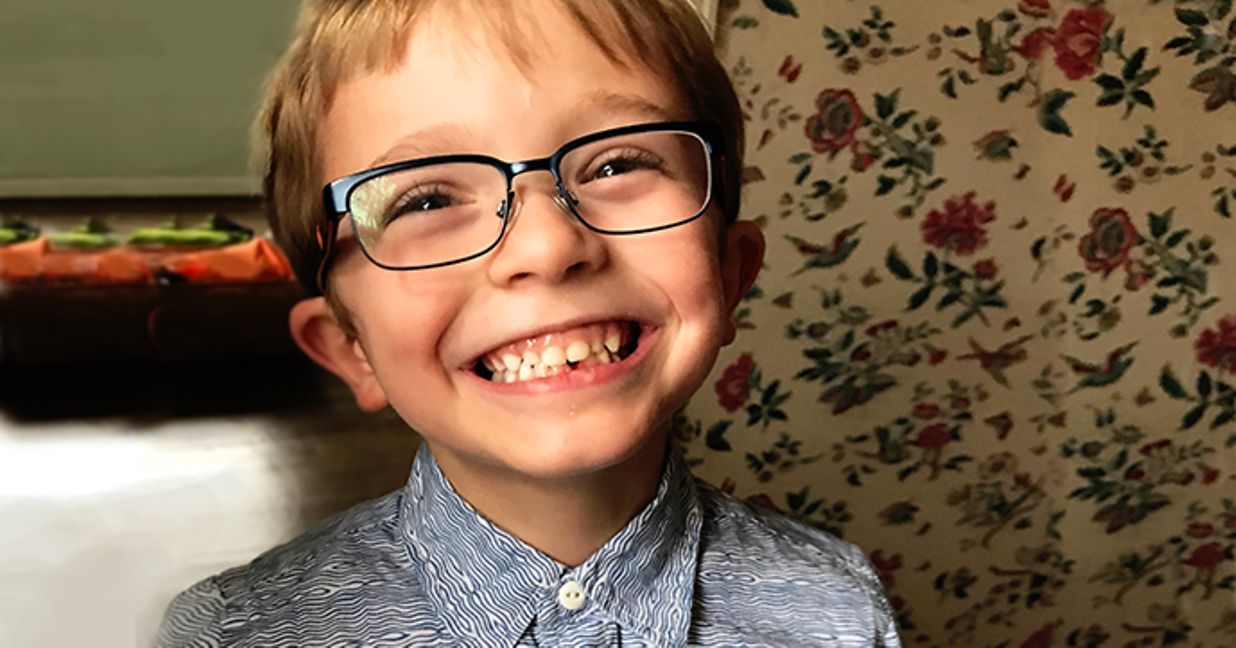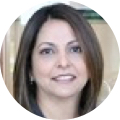Vision benefits is a business of numbers, reports, and statistics. But it’s also an industry of people and impacting lives. At EyeMed, as we focus on vision benefits that are easy for members to use, innovation for evolving consumer preferences, and approaches that save as much money as possible, we’re also impacting millions of lives around the world who don’t have access to vision care and eyeglasses.
Fred Neurohr, an EyeMed senior manager, experienced what it’s like to give back to those who may not have access to vision care when he met an energetic 5-year-old named Quincy. With an unexpected shared connection, their story shows why vision benefits are so critical to so many lives, and also how important it is for companies to use their resources to help those who may not have access to vision care.
Quincy’s story
We’ve asked Quincy’s parents (Ollie and Libby) to help Fred tell that story.
Like hundreds of EyeMed employees, Fred volunteers with OneSight’s Community Vision Care to screen children near our U.S. headquarters for vision problems, and provide free eyewear to those in need. That’s how Fred and Quincy met.
FRED: Quincy is a good kid, super sharp, bright, funny. When he came in, we chatted a little bit, and I put him through the visual acuity test, where you read letters off a chart. He was having problems with one eye, so I scheduled him for a retest the next day. Results were exactly the same.
OLLIE: I don't think we've ever had any worries about his vision, so this was a surprise.
LIBBY: We followed up pretty quickly because vision issues run in my family. My cousin’s problem went undetected for a long time, and he had almost complete blindness in one eye. I thought 'Oh, I need to take care of that right away and make sure it’s not anything that serious.'
FRED: I always hear about the kids who don’t go to the eye doctor because parents don’t have the means. It’s gratifying to hear a story where the parents got the message and they acted right away.
Based on the school screening results by Fred’s volunteer team, Quincy was referred to see an eye doctor for a comprehensive eye exam. It turns out he had a vision problem nobody really knew about.
LIBBY: The eye doctor did a full battery of tests. She even gave him a color blindness test and dilated his pupils. He was a real trooper about it.
QUINCY: We did the “E” at one place. It was just the big one (referring to the letter chart).
LIBBY: During the eye exam, I was kind of surprised because he was edging off the seat trying to see the letters. So, I kind of knew then that, yeah, he should be able to see better.
FRED: A kid’s vision problem can be hidden from us as adults because all we can see is that they can’t sit still or they’re talking to other students all the time. But if you can’t see the board and you’re sitting in the classroom, what else are you gonna do? And, kids who can’t see well often don’t realize it either. So that’s a challenge for all stakeholders – the kids, the parents, the teachers-- everyone.
Fred felt an instant kinship with Quincy because he was in a similar situation as a kid, but the lack of an eye exam caused lifelong problems for Fred.
FRED: When I was a kid, I didn’t go to the eye doctor, and now I have monocular vision--peripheral in both, but central vision in only one eye. It would have been an easily correctible issue, but was left untreated and now I have a lifelong disability. I missed out on 3D movies and couldn’t play baseball. I still make adjustments even today.
LIBBY: My cousin sounds a lot like you. They discovered his problem when he was 8, which is pretty young – but it’s really not. It made me realize that I should have considered eye exams a more regular thing. You go to the dentist a lot, so why not the eye doctor?
FRED: There’s definitely an education piece to it. In my case, and in most, I think they just didn’t know, they didn’t realize there was an issue.
At the OneSight clinic, kids have the opportunity to choose eyeglasses they’ll be comfortable wearing, sometimes for the first time.
OLLIE: Quincy picked out his own frames, and that was fun.
QUINCY: Because they’re blue and orange!
FRED: I was down in Baton Rouge at a OneSight clinic 2 years ago, and when the kids got their glasses, I remember they had a 'holy smoke' look on their faces. They were seeing things they hadn’t seen before. When kids experience clear vision the first time, it’s magical for them.
OLLIE: This is funny…Libby sends me a text and says Quincy needs glasses. I call her up and I just hear this sobbing in the background. I ask 'Is he that upset about it?' She said, 'No, that’s Julian (Quincy’s little brother). He’s upset that he didn’t get glasses, too.'
LIBBY: He wears them every day and reminds me: 'Momma, I forgot my glasses, we have to go back up and get them.'
QUINCY: At night, they’re on my table. And I don’t wear them when we pillow fight.
FRED: You can see the kids holding their eyeglass cases in a way you don’t see kids holding other stuff. They realize how important it is. They hold on to that case the way I wish my kids would hold on to their cellphones.
OLLIE: It's nice to have help keeping track of all of things like vision changes; things that you're not always thinking about. It’s great to have the safety net OneSight provides to the community.
LIBBY: I’m so grateful that they catch vision issues early.
FRED: If you think about quality of life, and the tremendous gains that come from one little intervention – that one little thing could have paid dividends my whole life. We can’t rely on just one source of support for clear sight--clinics, schools and vision benefits all play a role. If you engender a sense of caring, if you allow employees to give back to their communities, you know you’re dealing with a company of people who care.
OneSight is a leading global nonprofit dedicated to helping the world see. Its work is core to who we are at EyeMed, and our employees are highly involved in OneSight activities and fundraising. It’s a natural extension of our mission to ensure our members can clearly see and experience all that life has to offer. Last year in Cincinnati alone, near our headquarters, hundreds of EyeMed employees were part of the 1,200 volunteers who visited 85 area schools and performed 25,000 vision screenings. To learn more or see how you or your company can support OneSight, visit onesight.org.
BL-1801-CB-262




